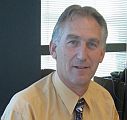THE STORY OF 2018 WAS CLIMATE CHANGE: “To anyone who worries about making a case for climate action based on the weather, I would simply ask: Do you have a better idea?” – David Leonhardt, New York Times

“A global heat wave. Extreme rainstorms. Severe droughts. Rapidly intensifying Gulf Coast storms. The deadliest wildfire in California history. And a presidential administration that’s trying to make the problem worse. There were more obvious big news stories than climate change in 2018. But there weren’t any more important stories, in my view. That’s why it is my choice for the top story of the year. It’s the one most likely to affect the lives of future generations,” wrote David Leonhardt.










